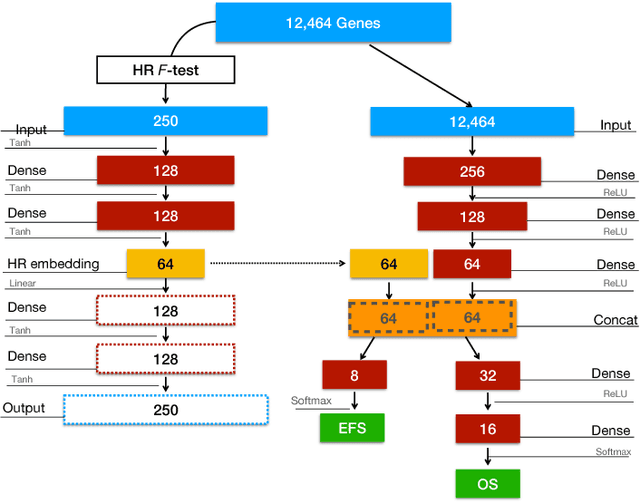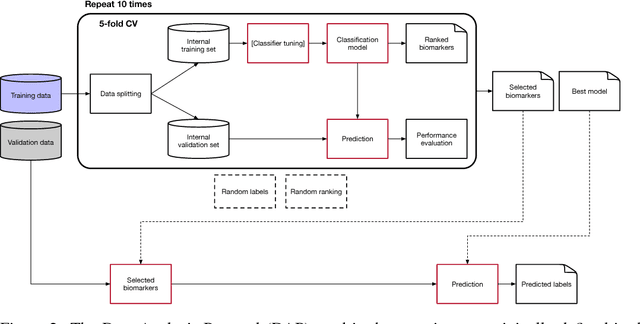A multiobjective deep learning approach for predictive classification in Neuroblastoma
Paper and Code
Feb 22, 2018



Neuroblastoma is a strongly heterogeneous cancer with very diverse clinical courses that may vary from spontaneous regression to fatal progression; an accurate patient's risk estimation at diagnosis is essential to design appropriate tumor treatment strategies. Neuroblastoma is a paradigm disease where different diagnostic and prognostic endpoints should be predicted from common molecular and clinical information, with increasing complexity, as shown in the FDA MAQC-II study. Here we introduce the novel multiobjective deep learning architecture CDRP (Concatenated Diagnostic Relapse Prognostic) composed by 8 layers to obtain a combined diagnostic and prognostic prediction from high-throughput transcriptomics data. Two distinct loss functions are optimized for the Event Free Survival (EFS) and Overall Survival (OS) prognosis, respectively. We use the High-Risk (HR) diagnostic information as an additional input generated by an autoencoder embedding. The latter is used as network regulariser, based on a clinical algorithm commonly adopted for stratifying patients from cancer stage, age at insurgence of disease, and MYCN, the specific molecular marker. The architecture was applied to Illumina HiSeq2000 RNA-Seq for 498 neuroblastoma patients (176 at high risk) from the Sequencing Quality Control (SEQC) study, obtaining state-of-art on the diagnostic endpoint and improving prediction of prognosis over the HR cohort.
 Add to Chrome
Add to Chrome Add to Firefox
Add to Firefox Add to Edge
Add to Edge